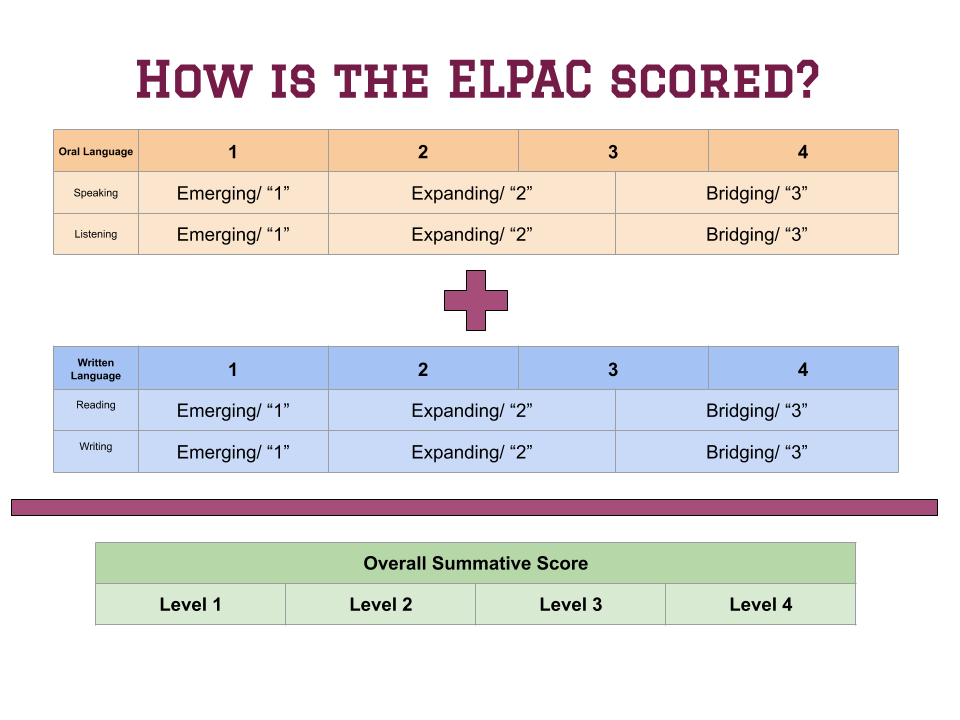How the ELPAC is Scored
There was a joke years ago, that the TV show Family Guy was written by a bunch of manatees who swam around in a tank rearranging “idea balls” into episodes. Such was the randomness of the jokes and the abruptness of their cutaways. This writing style must not be a total fail, because the ol’ manatees are still hard at work, two decades after the show’s premiere. It’s a formula that works for comedy. It doesn’t work for kids.
Two years after its inception, scoring for California’s state language assessment- the ELPAC- remains mysterious for the people it impacts the most: students. The past decade of educational research reveals the overwhelming importance of clarity. Somehow, however, we’ve muddied the waters on an assessment that is often the gatekeeper for allowing middle and high school students to take an elective of their choice. Most middle schoolers I work with know that they need a “four out of four” to pass the ELPAC. How that four is actually calculated, on an exam with over fifty questions, is nonsensical to the average seventh grader. It might as well be written by a pool full of manatees.
Like most of the standardized tests I see in schools, the ELPAC assigns a scale score (i.e. “1482”) and a proficiency level (i.e. “somewhat developed”) to students’ performance. Overall proficiency levels correspond with a straightforward 1-4 number value. There’s more: students’ scale score is comprised of two language areas, oral language and written language, which each have their own scale score (anywhere from 1150-1950) and proficiency level (beginning/somewhat/moderately/well developed) and also correspond with a 1-4 number value. Are you still with me? The language areas are further divided into two domains each, which are given a level one through… THREE! If you’re confused, imagine what kind of sense this makes to an eleven year-old who speaks English as their second language. Or, try this conversation on for size:
Teacher: What score do you need to pass the ELPAC?
Student: Four.
Teacher: Awesome! Let’s set some goals. Which domain do you need to work the most on?
Student: Reading. I got a two last year. So this year, I’m going to try to get a four on the reading part.
Teacher: I like your thinking, but a three is the highest you can get on the reading domain.
Student: But I thought it was a scale of 1-4?
Teacher: It is 1-4. On the whole test. But not the domains. Domains are 1-3. The highest score you can get on the test is a four. Trust me.
I don’t have a clever solution. But I do have a picture! When too many of my conversations with teachers and students sounded like the one here, I put this together to help myself make sense of what I gathered from the California Department of Education, ELPAC.org, and startingsmarter.org.
I also have some advice: be honest, open, and patient. Trying to figure out how to pass a test is one thing, and learning is often another. Let’s keep learning at the core of our conversations with our kids.




